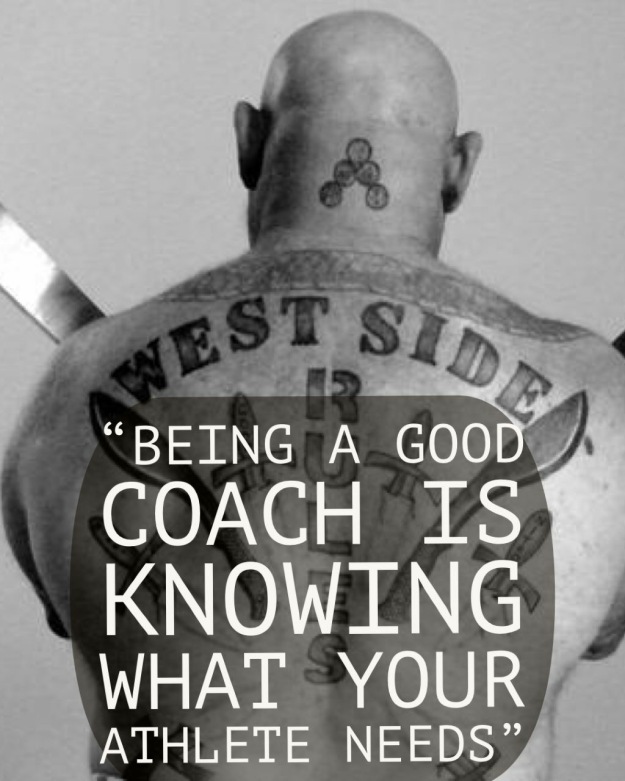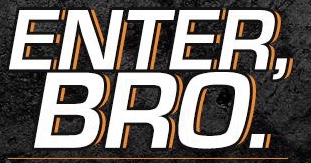“To me, the sign of a really excellent routine is one which places great demands on the athlete, yet produces progressive long-term improvement without soreness, injury or the athlete ever feeling thoroughly depleted.
Any fool can create a program that is so demanding that it would virtually kill the toughest Marine or hardiest of elite athletes, but not any fool can create a tough program that produces progress without unnecessary pain.” Dr. Mel Siff
I truly believe in those words, and to this day I am constantly looking for ways to make something slightly better. Despite some philisophical differences between the coaches whom I look up to, all have taken the path of consistently seeking improvements.

Taking a broad view of things, I asked myself how I could I improve things across a training continuum beyond getting better at what I already knew. Undoubtedly there were stones left unturned, and I have no issues with looking at material from a wide variety of people.
The majority of my last two years training has been using the Westside Barbell Conjugate method. From the outset I knew the education and training would be mentally and physically demanding, and would touch into a few areas I might not have previously given much thought.
Ironically, this isn’t a course I widely recommend for most trainers. I base my recommendation for or against it based on the individual asking, and have already talked a few people out of it. My opinion is that a certain mindset, dedication and willingness to learn is required along with knowing the populations they typically train.
The course itself isn’t widely recognized and is more of an education than a certification. In complete fairness, I say the same thing about numerous other courses as well. A high percent of the criticisms I’ve heard against the course come from people without an actual understanding of the methods and materials.
I don’t agree with 100% of the material in the course, and was bold enough to state my opinions in my examination essays. I couldn’t have done too bad as I passed with very good marks.
Reading…Lots of reading. Many of the core texts are translations of Russian works and not the easiest reads. Even Louie Simmons writings can be confusing at times as being concise is one thing he is not. Thankfully I already have a daily reading habit.
Test preparation is redefined. Only a singular text is required for most Certified Personal Trainer exams or even the more difficult Certified Strength and Conditioning Specialist exam. CPT exams vary in difficulty, but the major three organizations (ACSM,NSCA and NASM) all have fairly high failure rates.
That said, it is entirely possible to pass the CPT/CSCS exams without previously training anyone, or even yourself. Therefore it is possible to pass the exams and have no idea of what you’re doing.
The Westside Barbell Special Strengths Certificate requires familiarity with a minimum of six books, and up to sixteen books and a dozen DVD’s to be considered well prepared. Unless the individual is already an experienced lifter or coach, I believe it is near impossible to understand the material without having gone through the process of training yourself in the Conjugate method.
The exam is largely essay based, and answers using rote memorized quotes from the texts without further explanation in your own words is automatically marked incorrect. One of the two hand graders of the exam is the man who authored many of the books.
It can easily lead to additional education costs…The first Westside video I watched was on General Physical Preparedness (GPP). Despite coming in with a decent understanding of GPP, my initial notes suggested I pursue more education in several of the methods. I therefore took the time to certify in both Kettlebell (under Dan John) and Mace (online under Rik Brown), read everything I could find on John Brookfield’s Battle Rope Training and Joel Jamieson’s writings on conditioning.
FACT: I also attended the Functional Range Conditioning Mobility Specialist (FRCms) and Kabuki Movement Systems Level 1 course as I felt both added to the Westside material. Namely as a means of restoration (FRCms) and Teaching/Movement and Correctives (KMS) Both are courses I highly recommend.
That was based off just ONE DVD. The other books and DVD’s each created their own needs for greater instruction.
You will HAVE to get under the bar, and know what its like to struggle… The math and physics of the lifts are not beyond the reach of someone with a high school diploma. Having the ability to schedule, apply and optimize those numbers into tangible results is another matter entirely.
An actual understanding of the lifts requires you to lift things and train in the method over a period of time, with a year often being considered the minimum. I believe there are things learned under the bar that cannot be taught by any textbook.
A minimum-minimum of 4 training sessions per week will be required from you. 6-10 sessions per week is not uncommon. Every session is as much an education as it is training.
Personally, I feel participation in a Powerlifting meet should be a pre-exam requirement as its a challenge open to nearly everyone and tests ones ability to program and peak for an athletic event. If you succeed or fail you will still come away with new insights into training.
Reflecting back on this, I came out of this process as both a better coach and athlete. I cannot say the same for every course I’ve taken.



